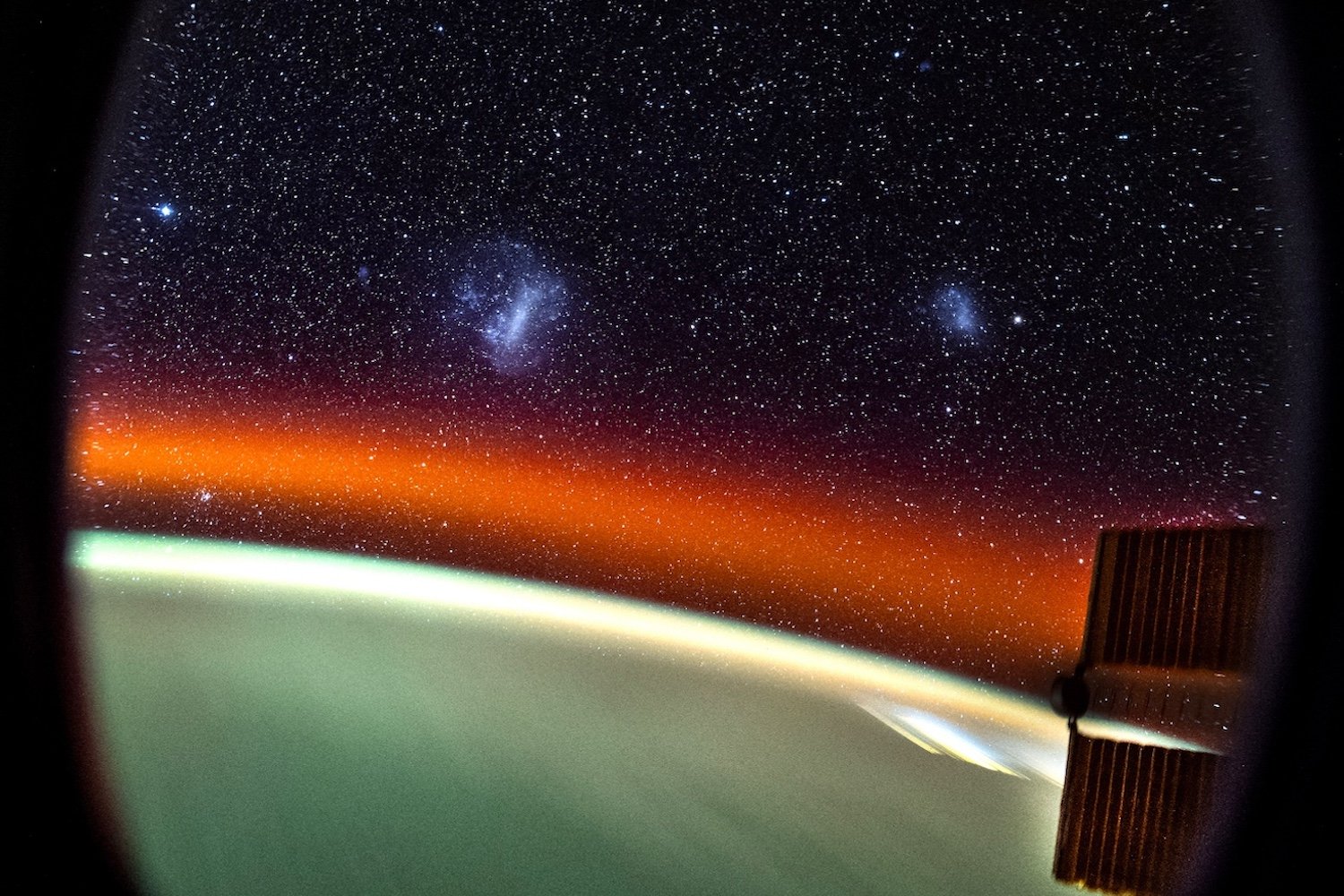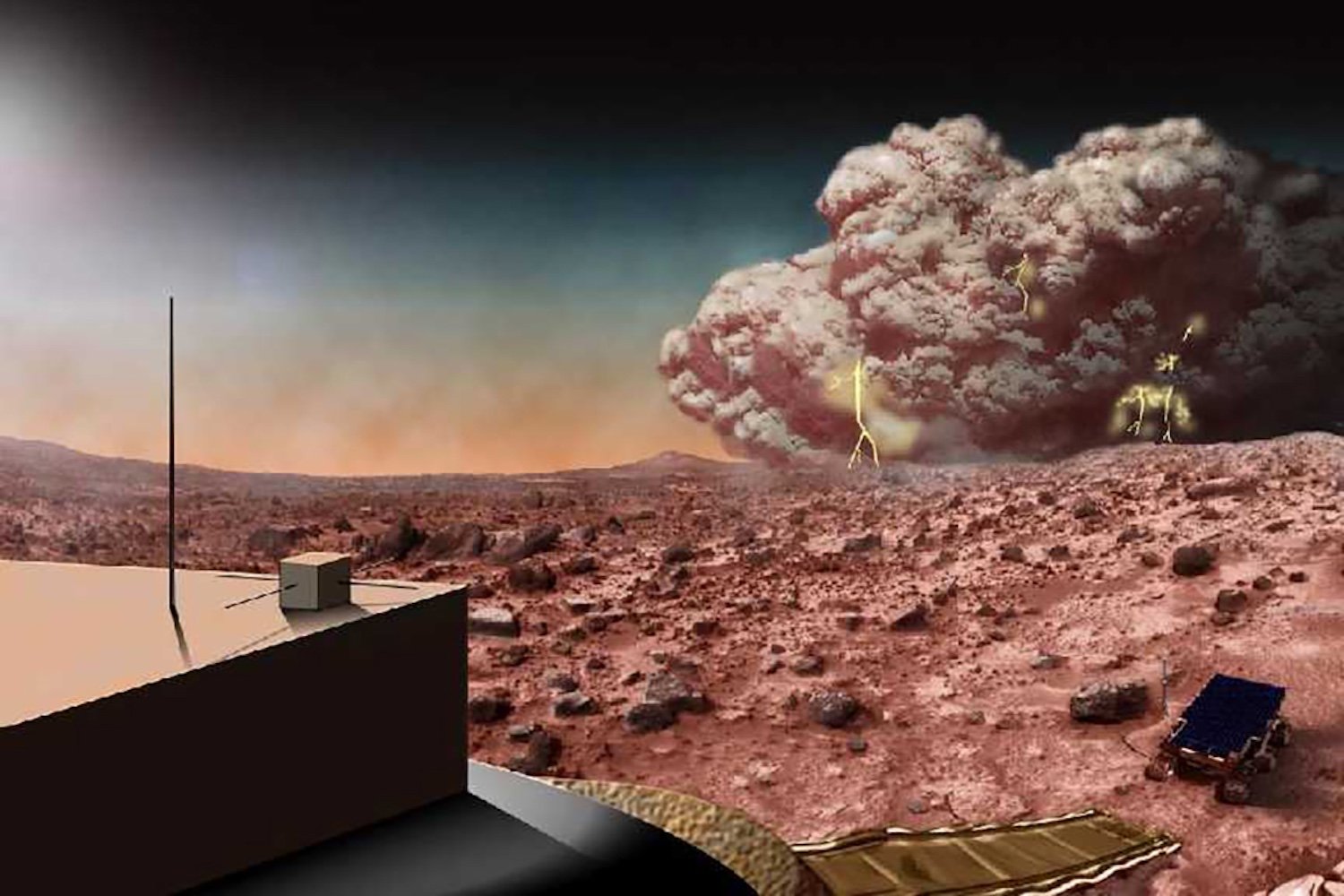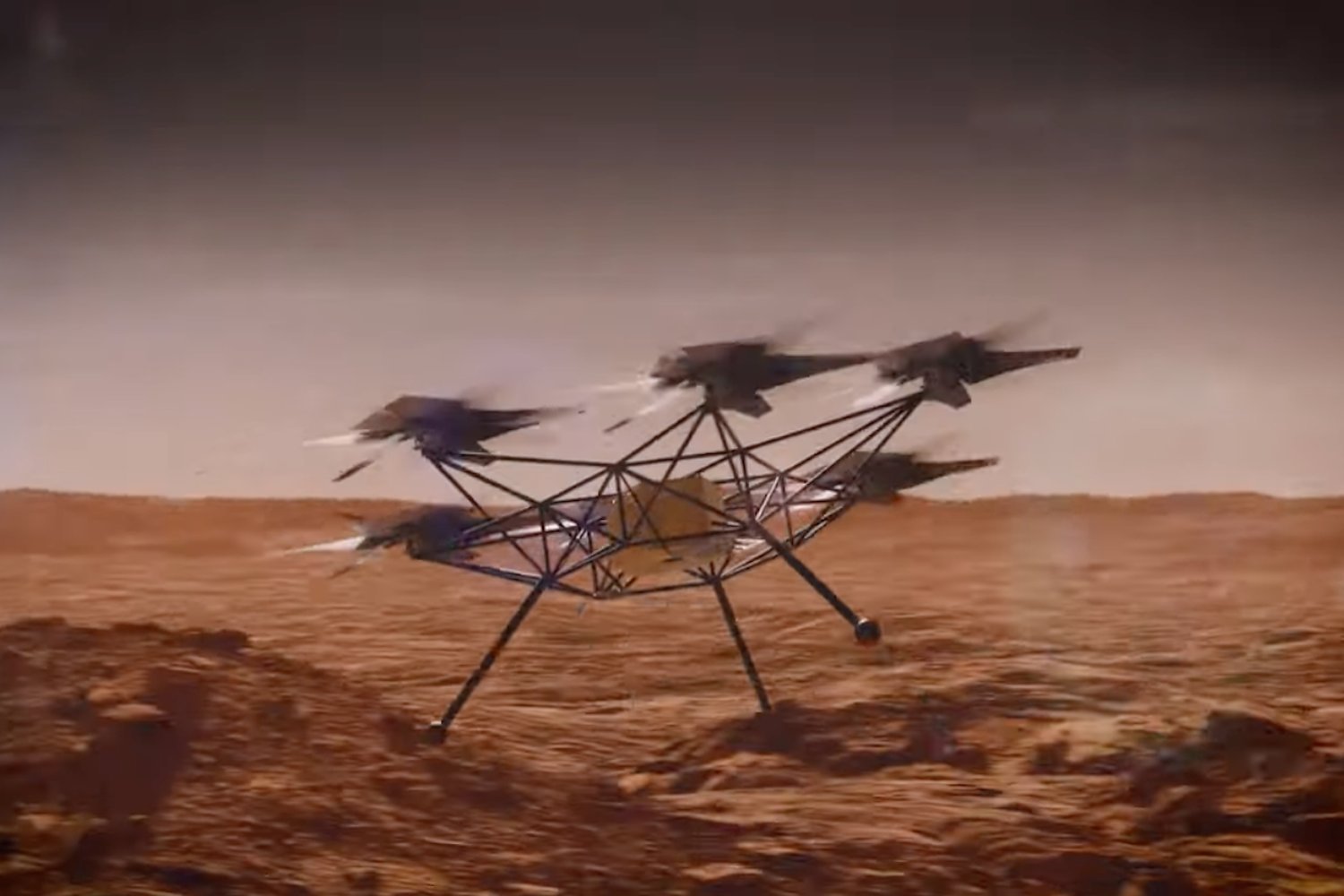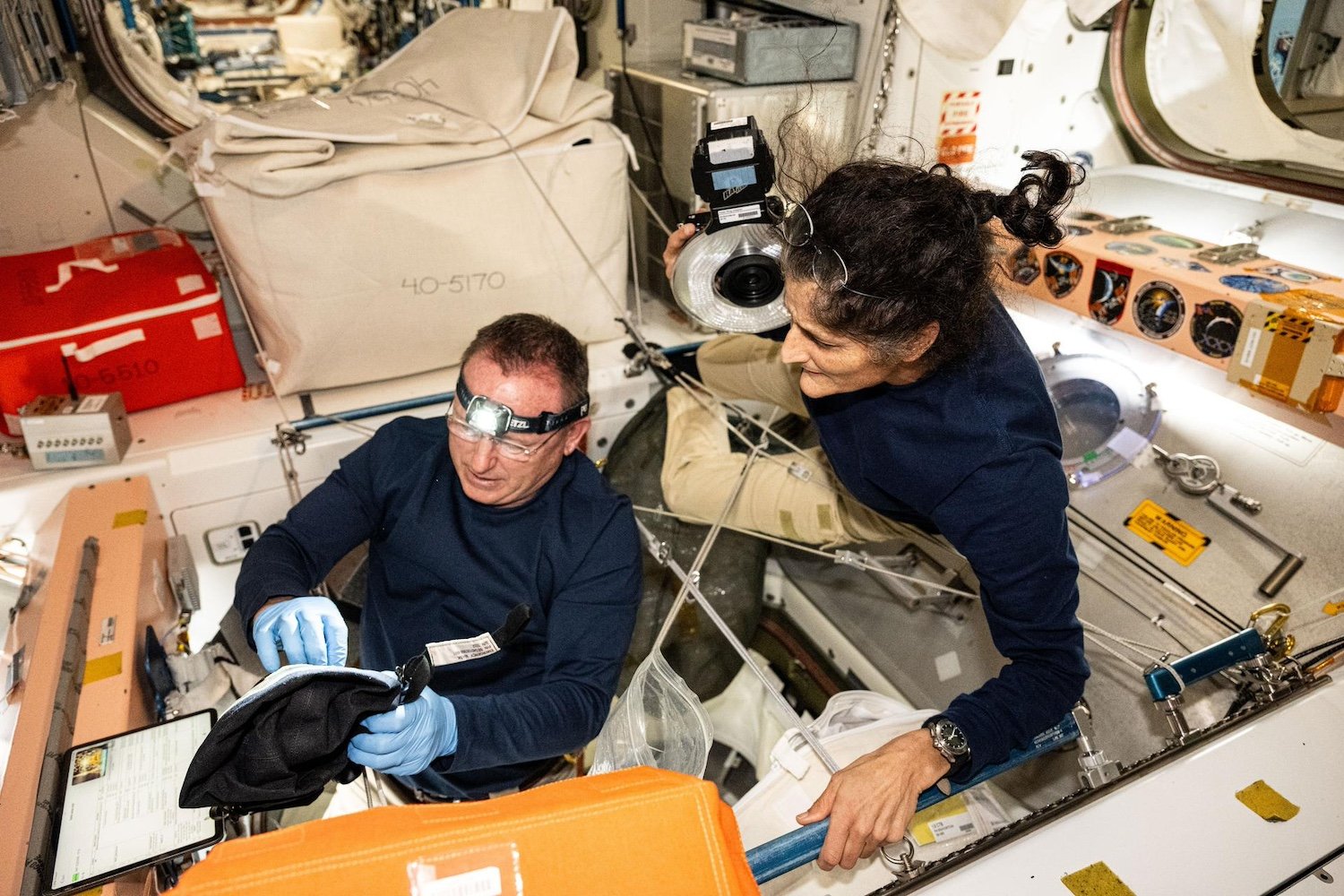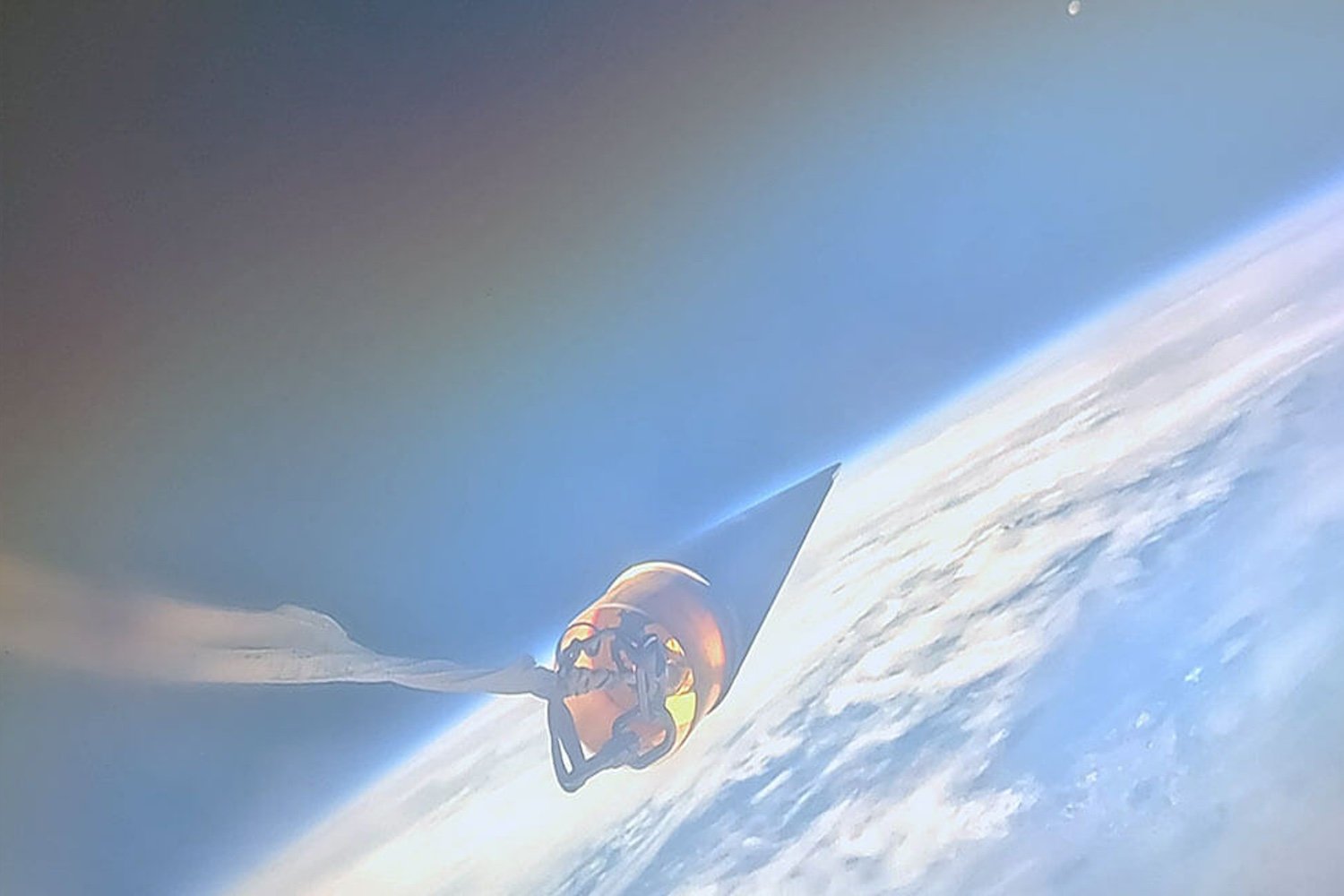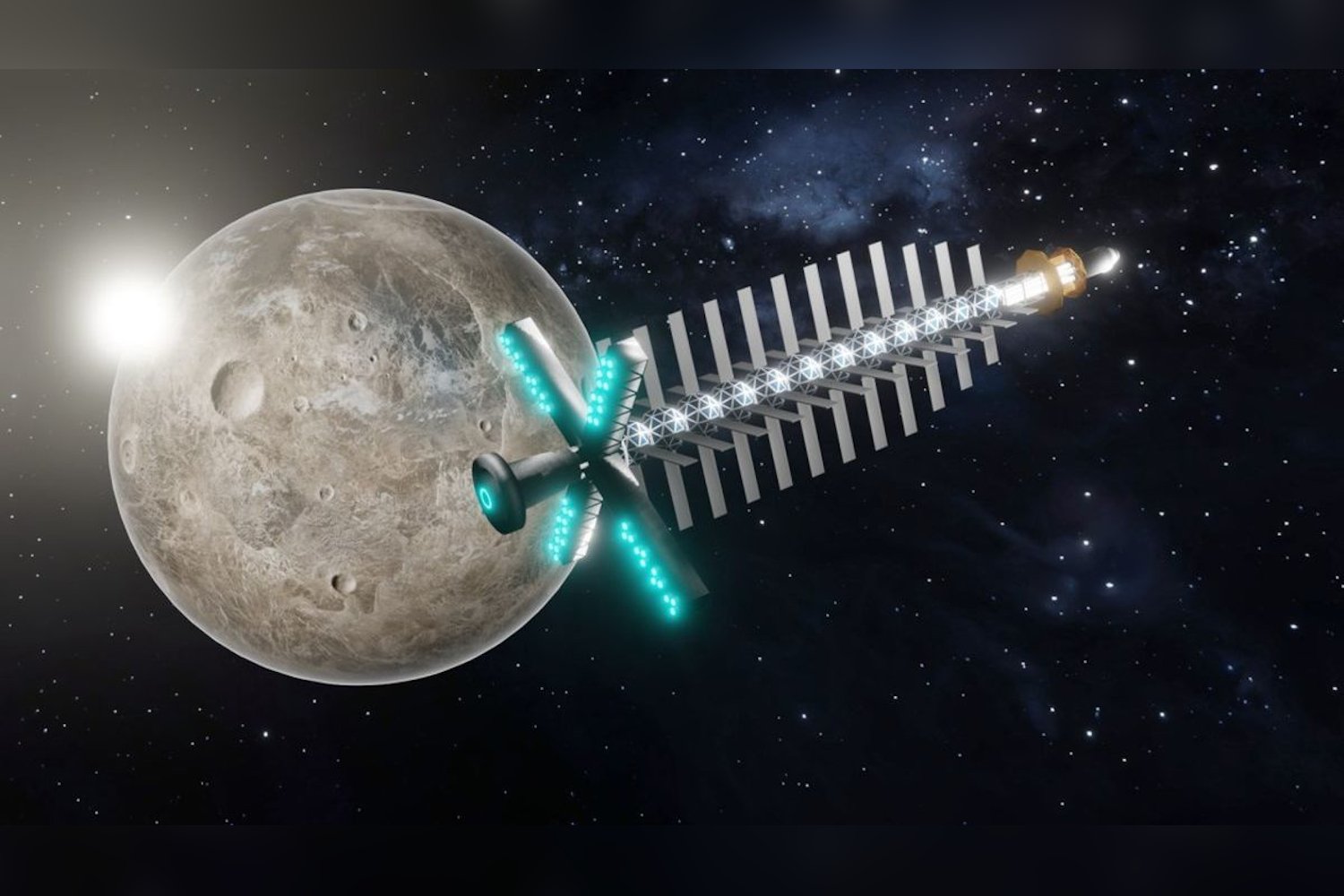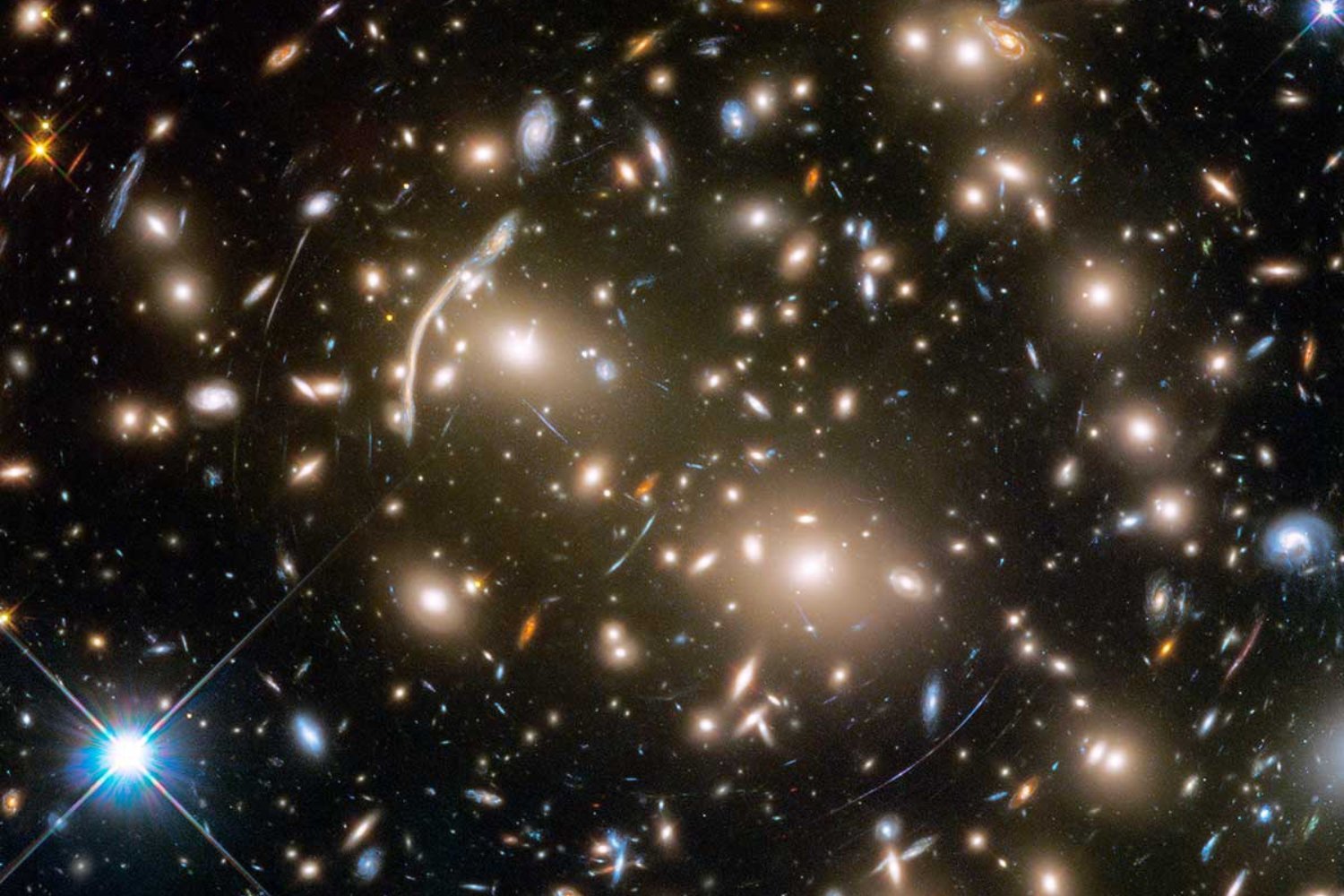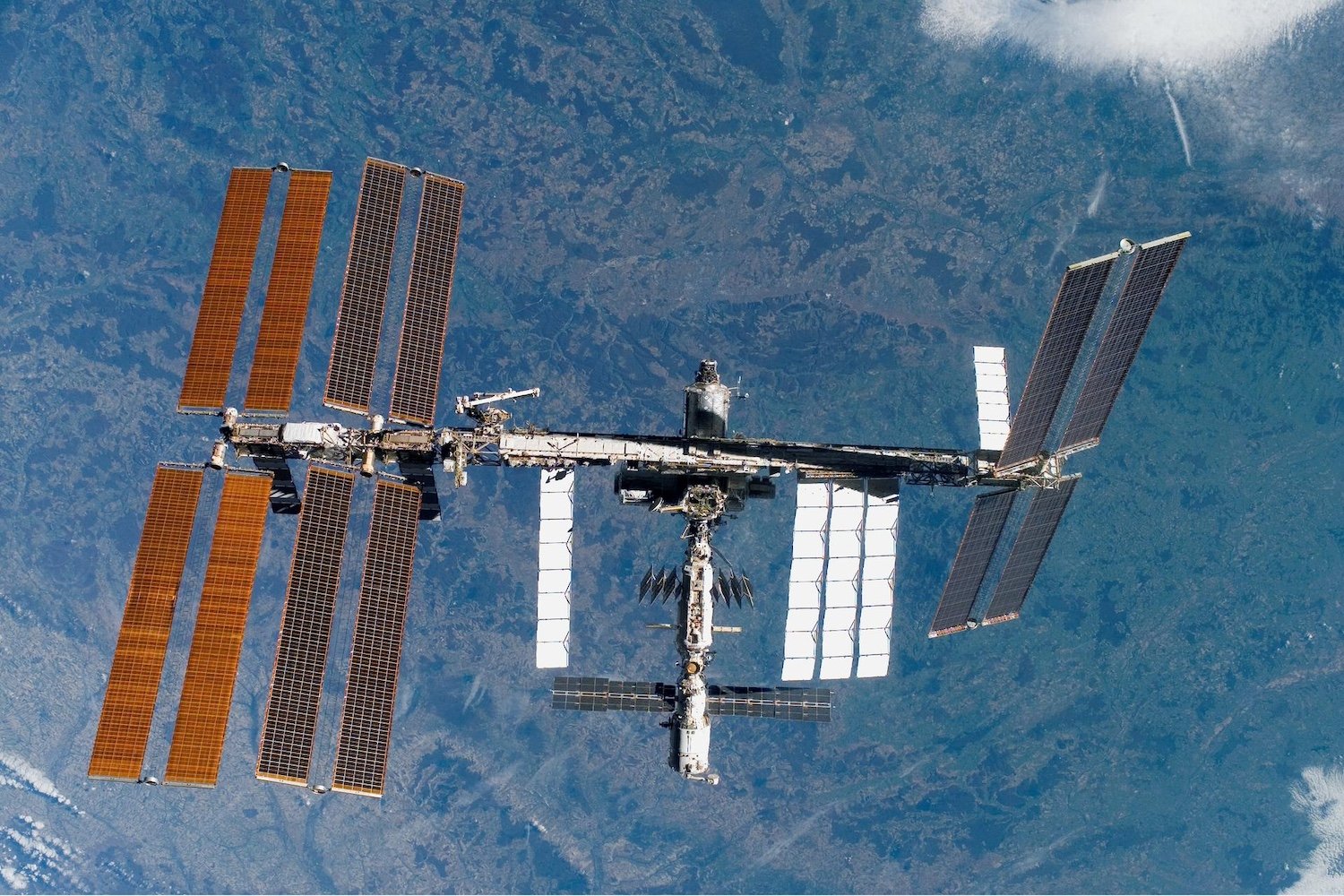From 250 miles (400 kilometers) above Earth, the International Space Station (ISS) offers a unique vantage point for observing the universe. NASA astronaut Don Pettit, currently on the ISS, has leveraged this perspective, utilizing a custom-built tracking device to capture stunning long-exposure images of stars and galaxies.
Recently, Pettit shared a captivating photograph on X, taken from the window of the docked SpaceX Dragon spacecraft. The image reveals a star-studded celestial field featuring two prominent galaxies from our local group within the Milky Way. “I flew a home-made tracking device that allows time exposures required to photograph star fields,” Pettit explained. “Stay tuned for more photos like this.”
Pettit’s ingenuity is evident in his homemade star tracker, a motorized mount positioned between his camera and tripod. This device counteracts the apparent motion of the stars, resulting in clear, focused images, a significant improvement over the typically blurry photographs taken from the ISS. This innovative approach allows for breathtaking views of the cosmos from low-Earth orbit.
A Glimpse at Galactic Neighbors
The two prominent celestial bodies in Pettit’s image are the Large Magellanic Cloud (LMC) and the Small Magellanic Cloud (SMC), both satellite galaxies of our Milky Way. These galaxies are visible to the naked eye from the Southern Hemisphere.
The LMC, located approximately 160,000 light-years from Earth, is a substantial satellite galaxy containing an estimated 30 billion stars. The SMC, a dwarf galaxy located about 210,000 light-years away, boasts around 3 billion stars. Both the LMC and SMC are believed to orbit the Milky Way, gravitationally bound to our galaxy as we journey through space.
Perspective from Orbit
Pettit’s image of the LMC and SMC offers a profound perspective on the vastness of the universe and our place within it. This isn’t his first endeavor to share unique views from space. Earlier, he captured images of what he described as “cosmic fireflies,” later identified as sunlight reflecting off Starlink satellites.
A Veteran’s Cosmic Curiosity
Launched to the ISS in September aboard a Russian Soyuz capsule for Expedition 72, the 69-year-old Pettit holds the distinction of being NASA’s oldest active astronaut. With over 370 days in space and more than 13 hours of spacewalk time, his experience is extensive. Despite his veteran status, Pettit’s curiosity about the cosmos remains undiminished, and he continues to share his unique perspective with the world.



